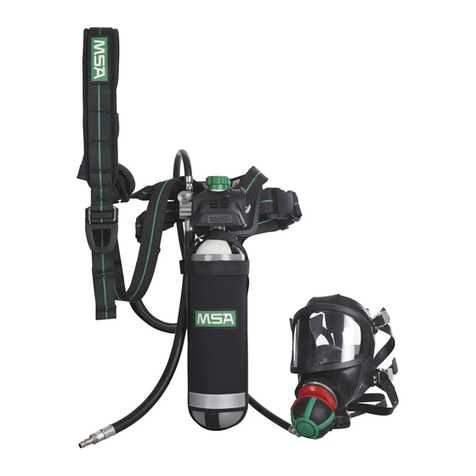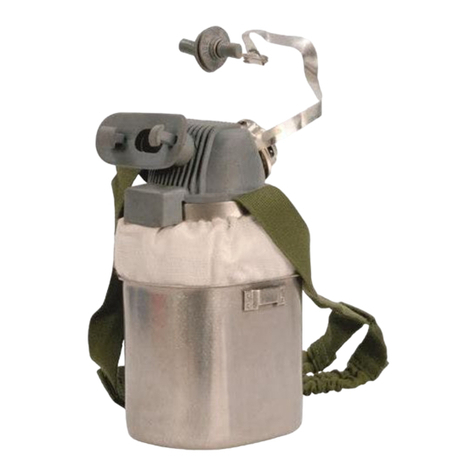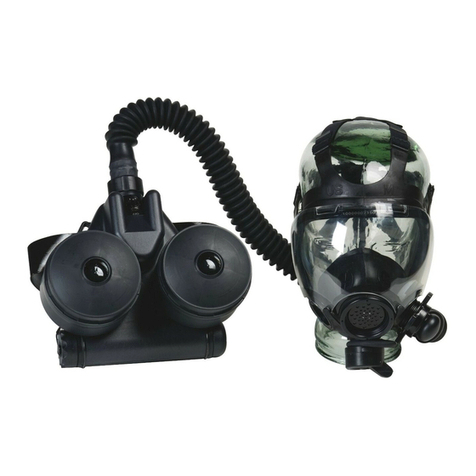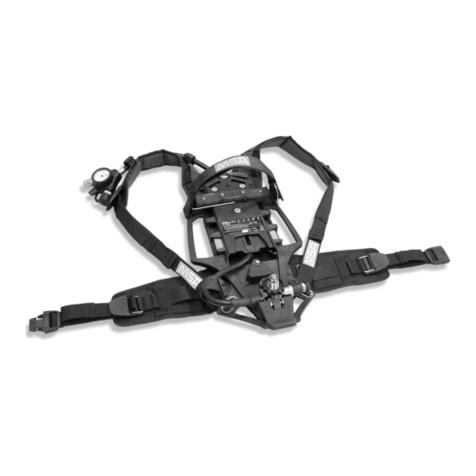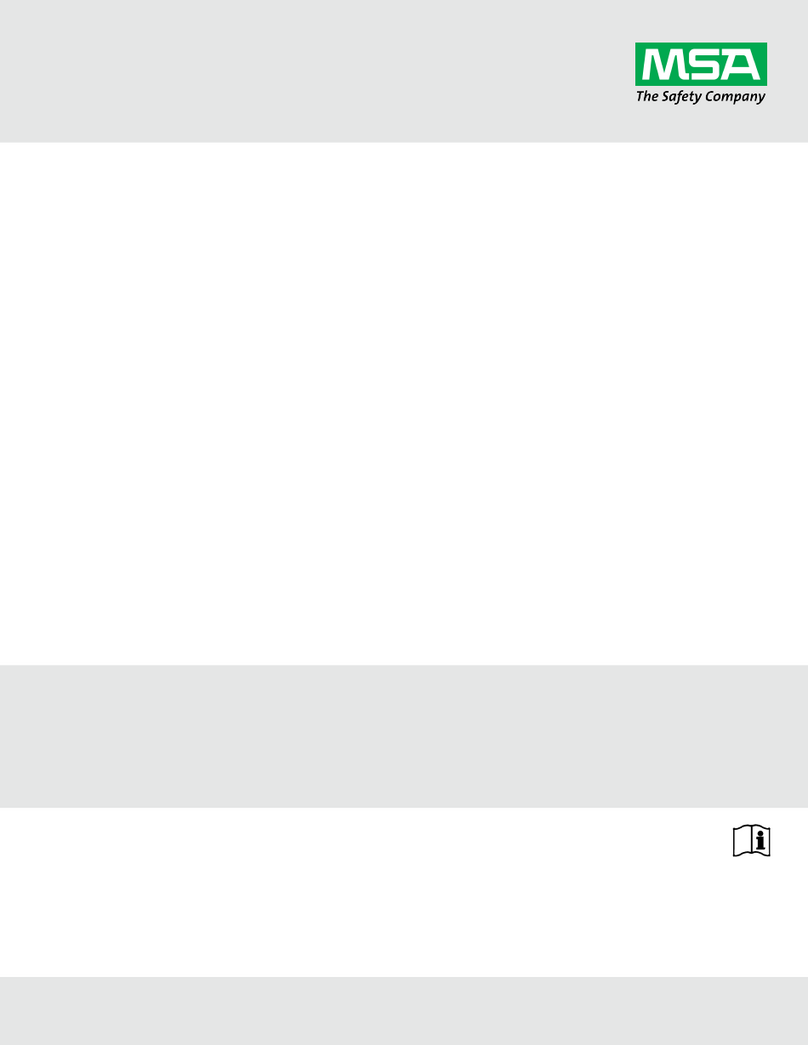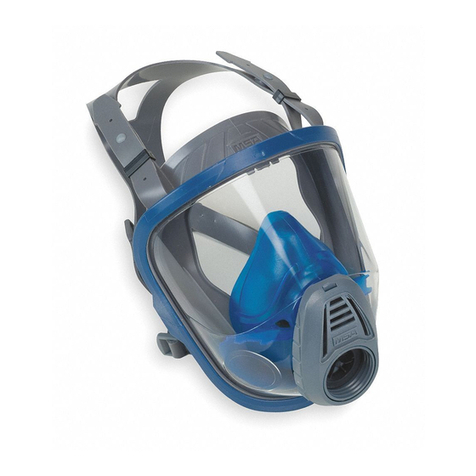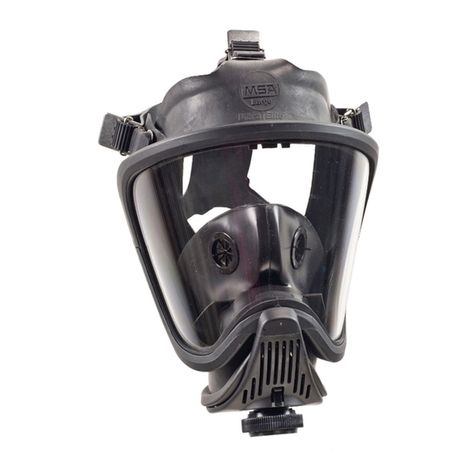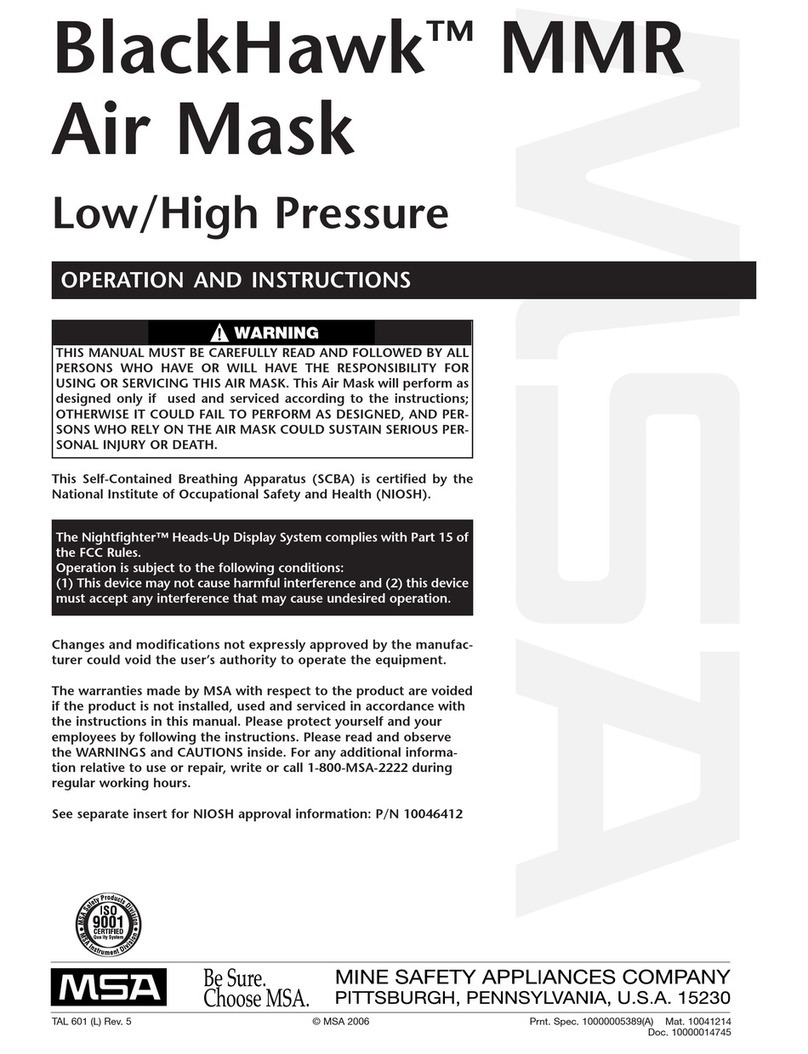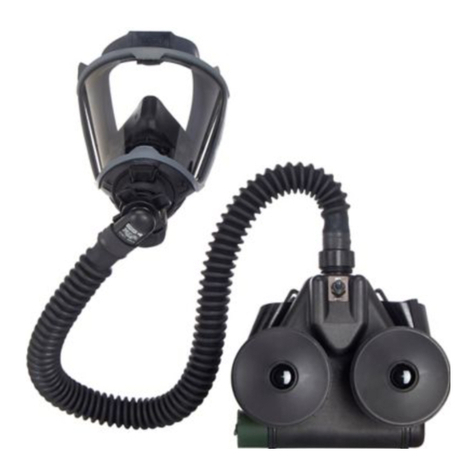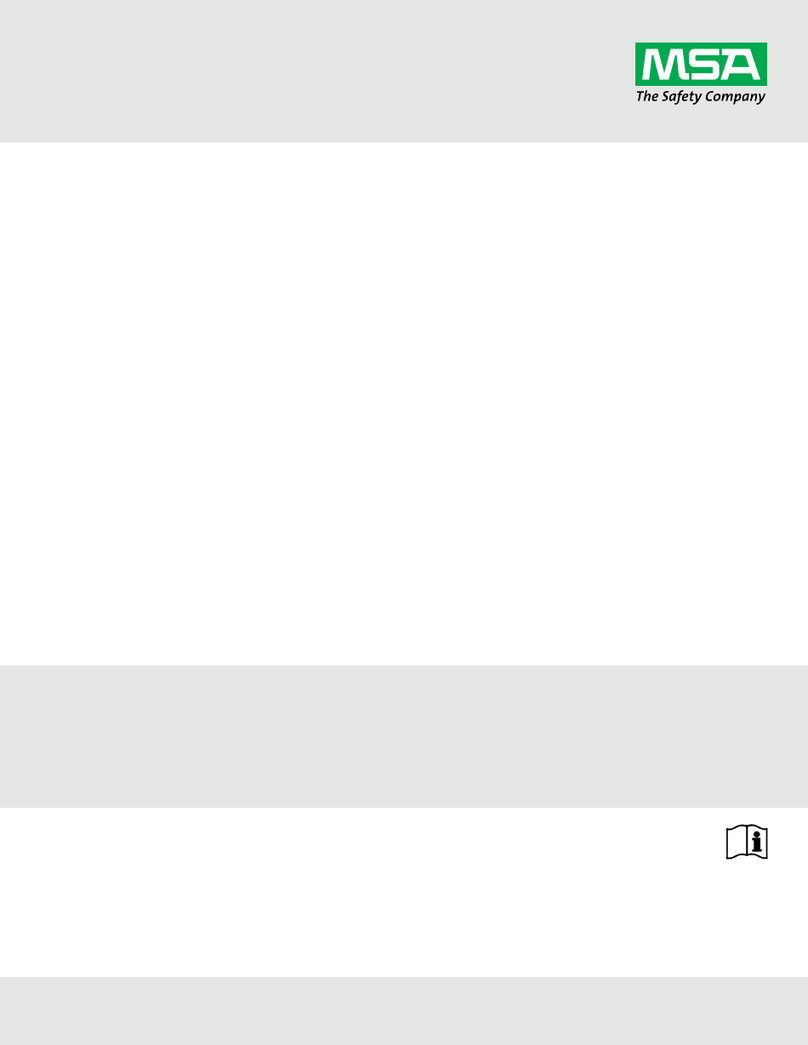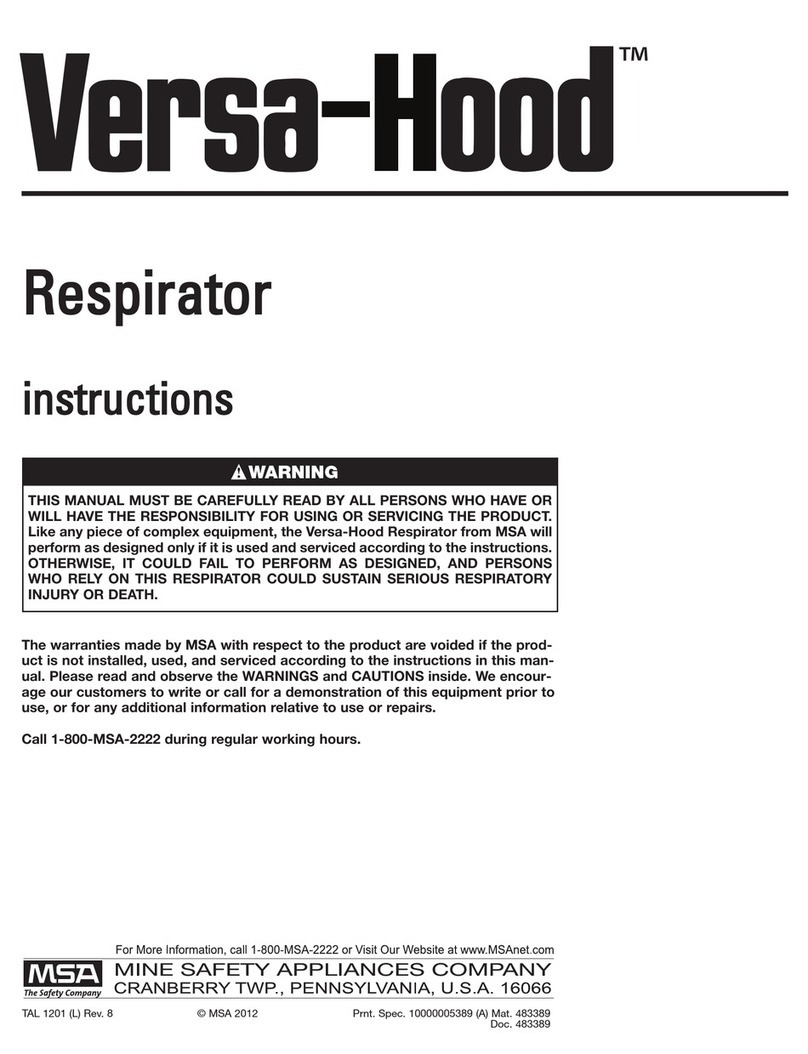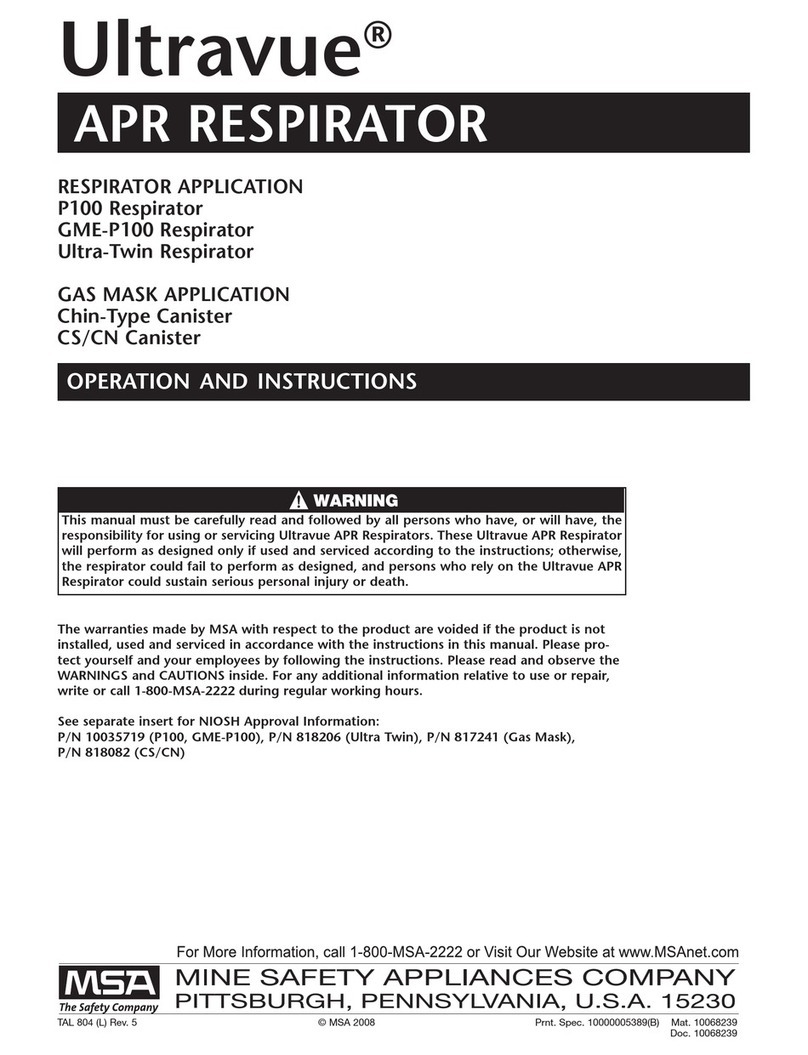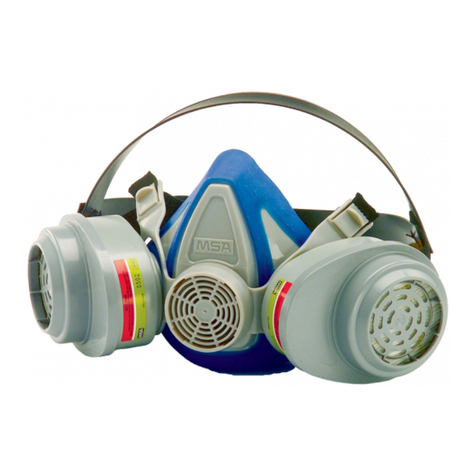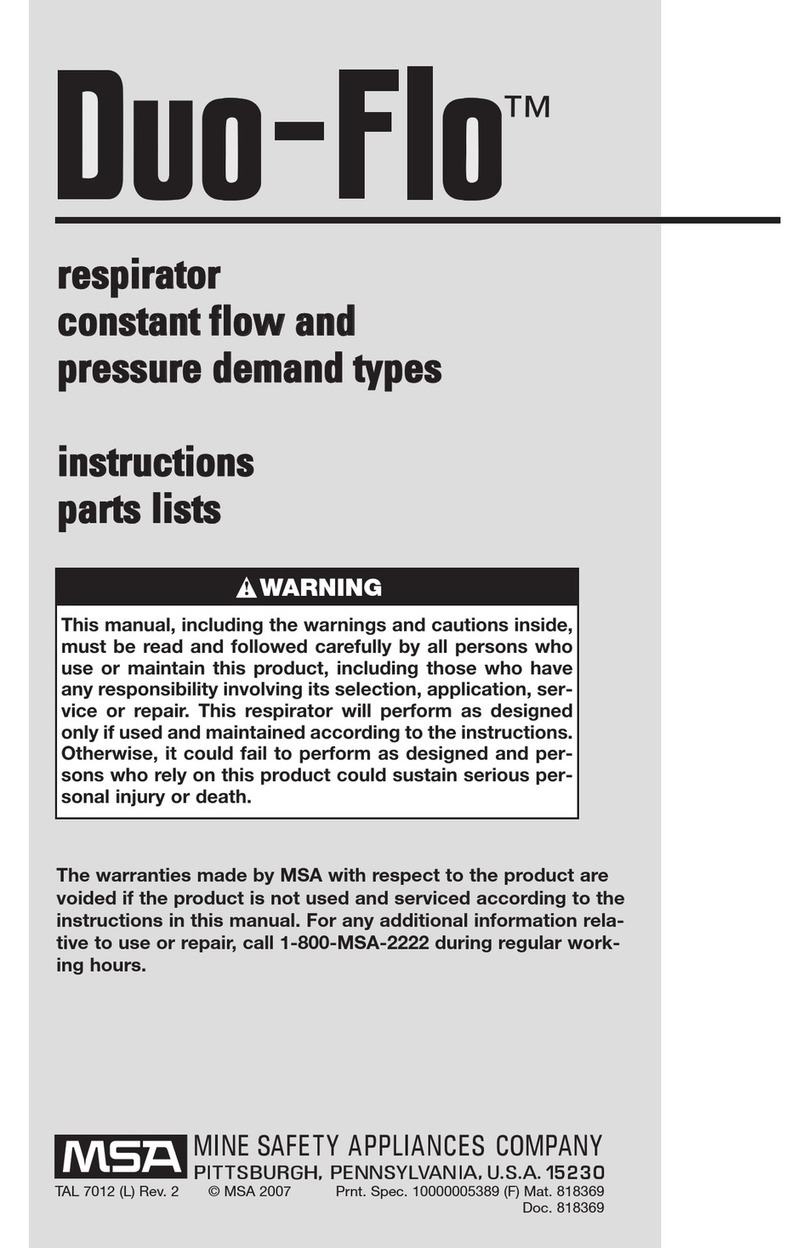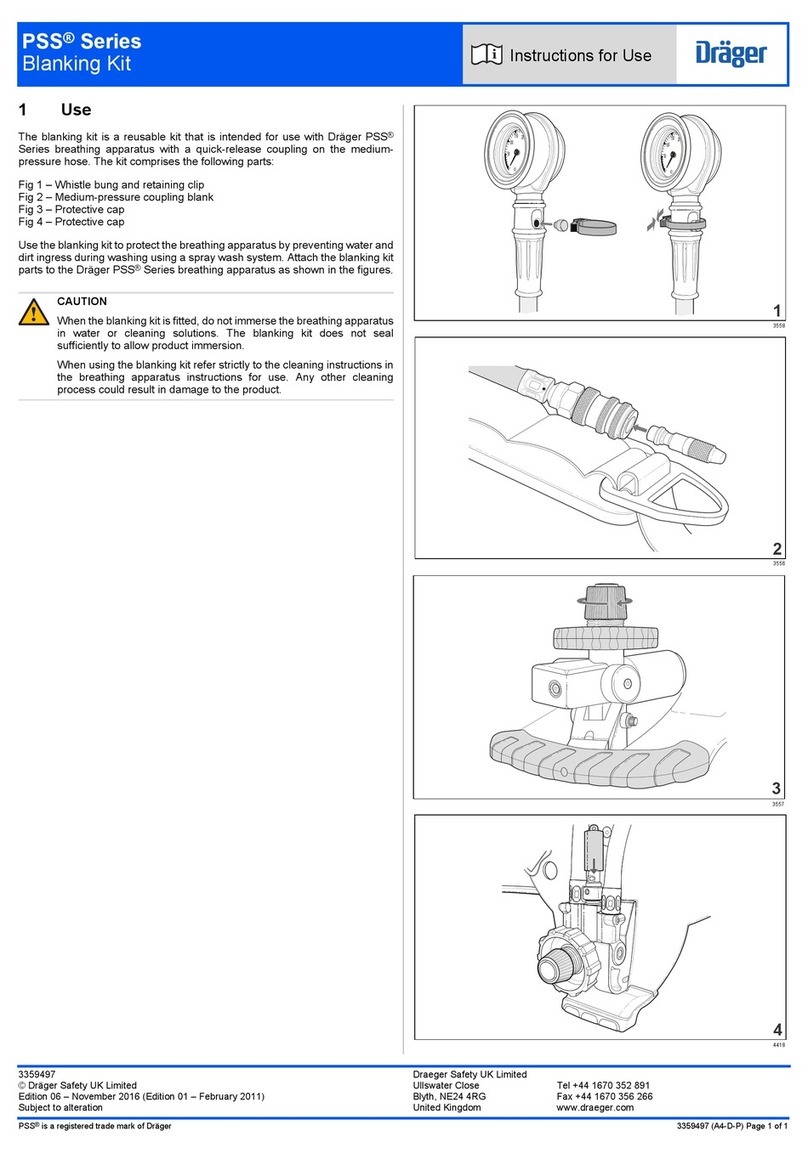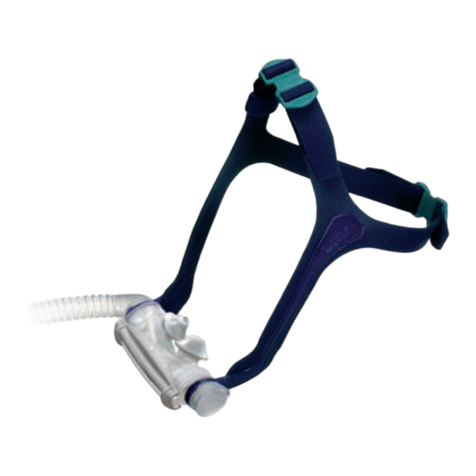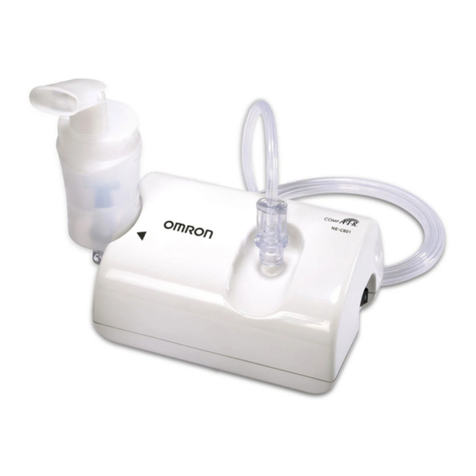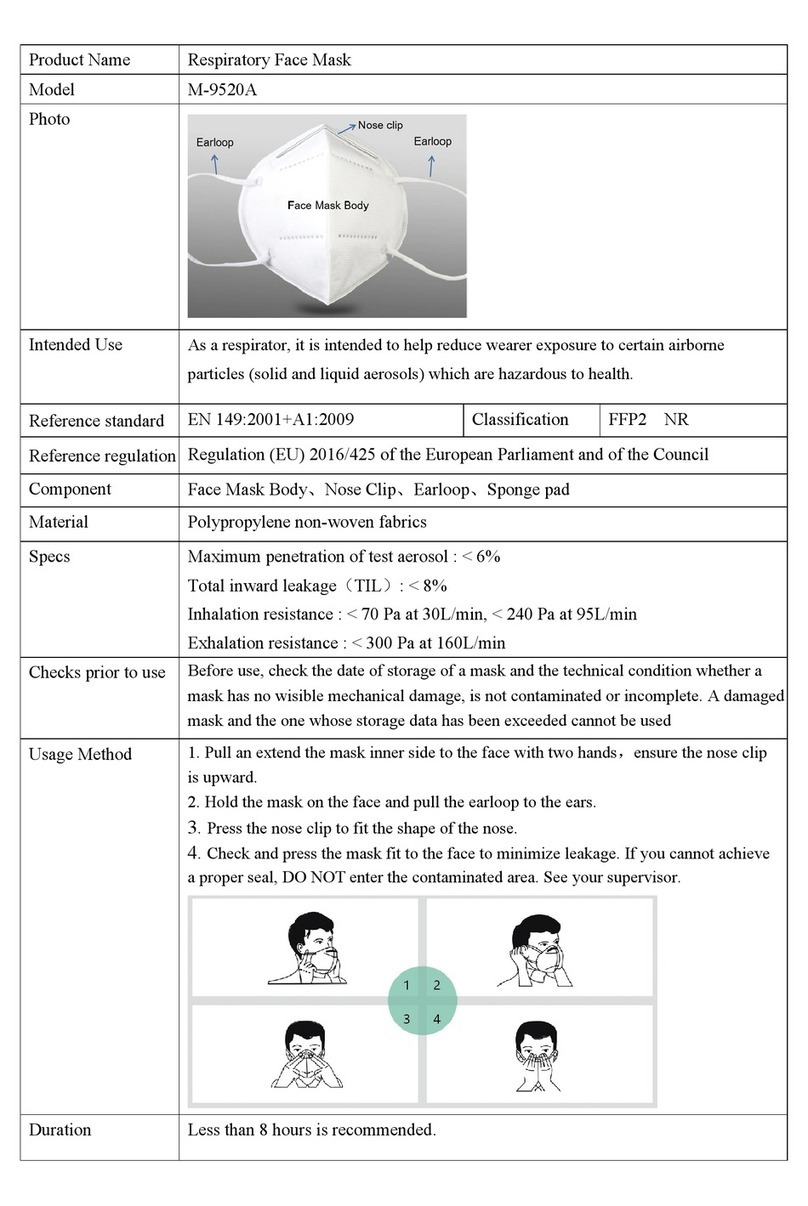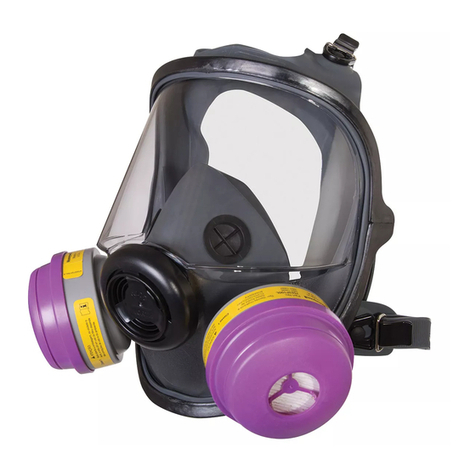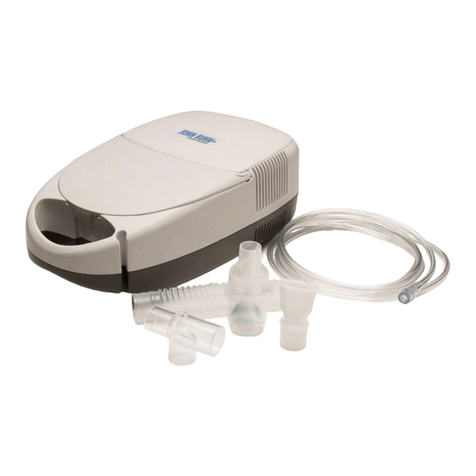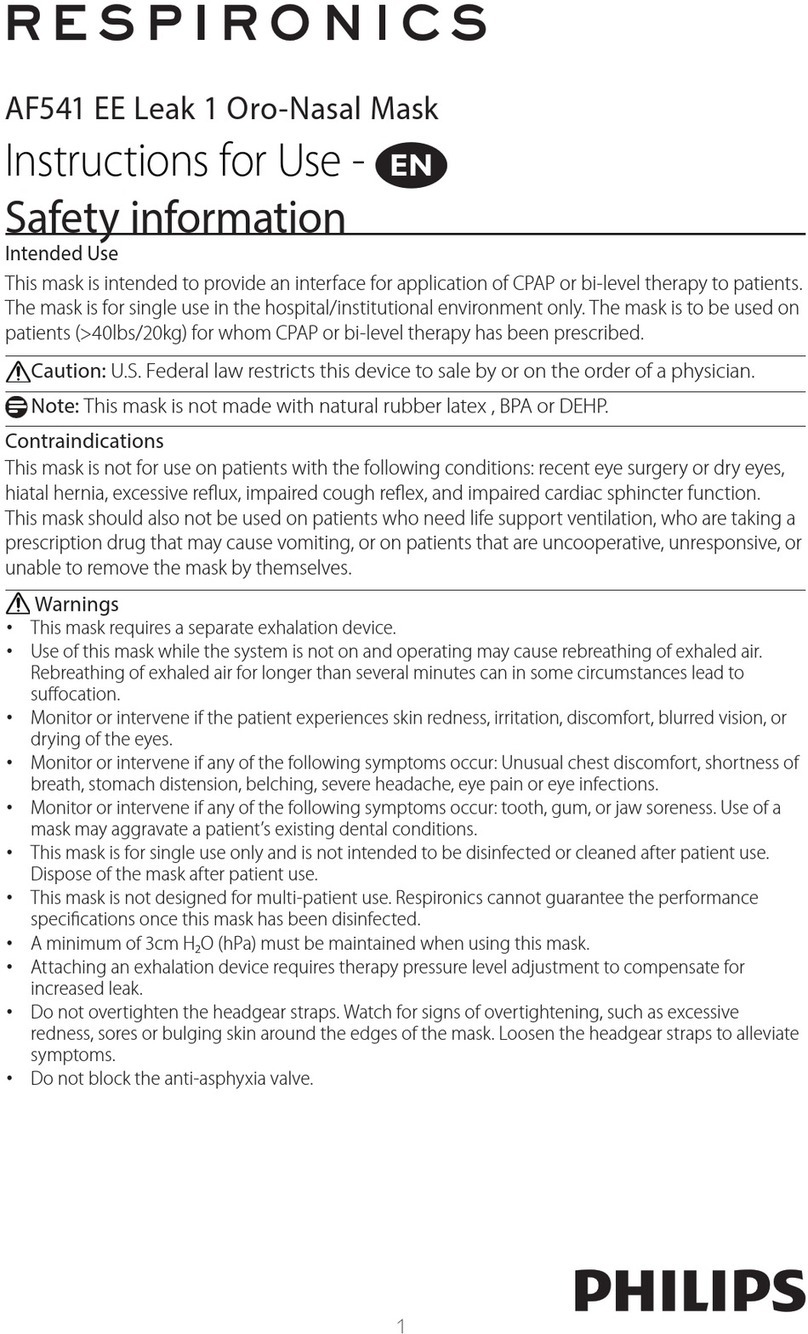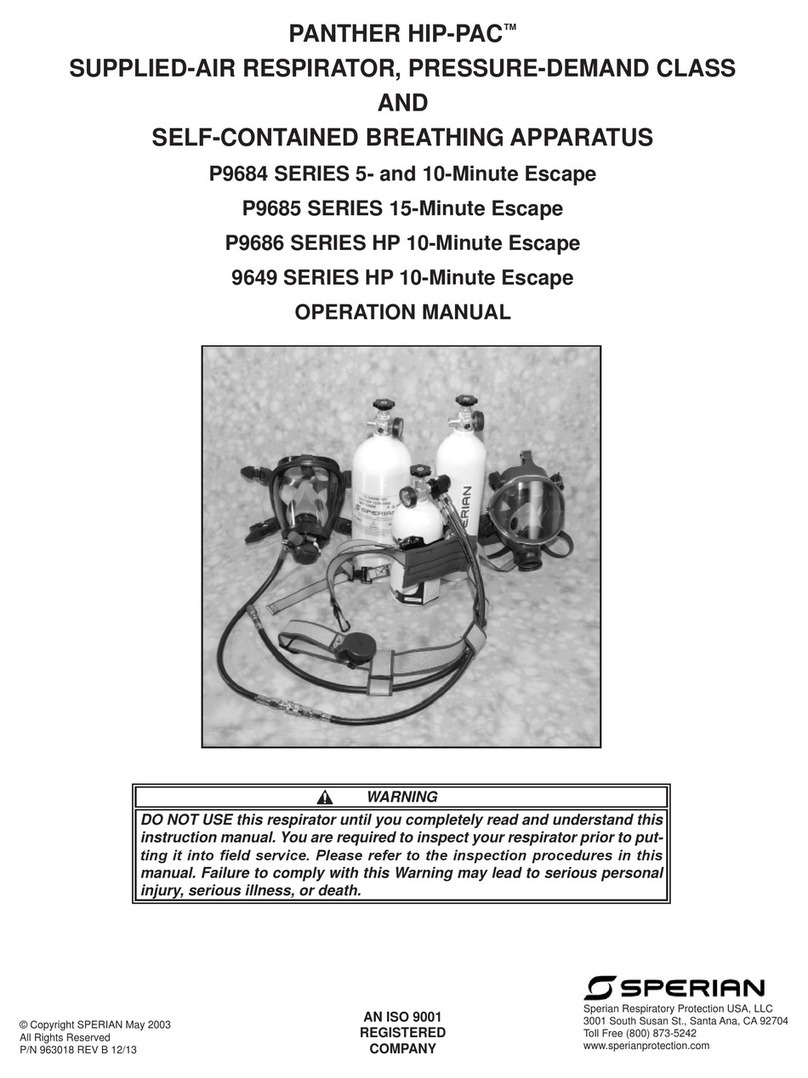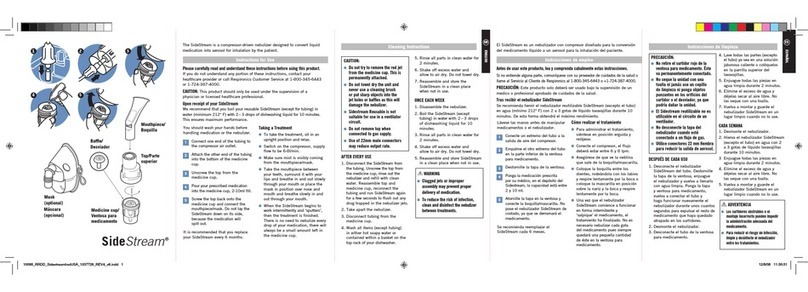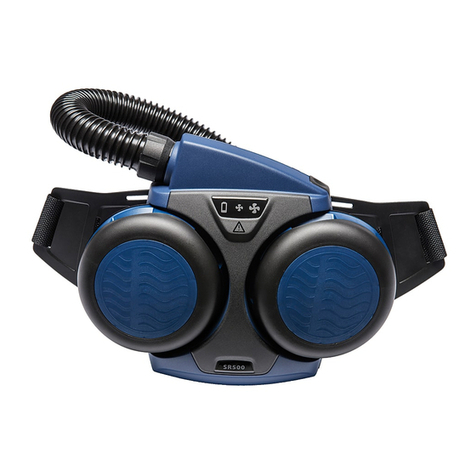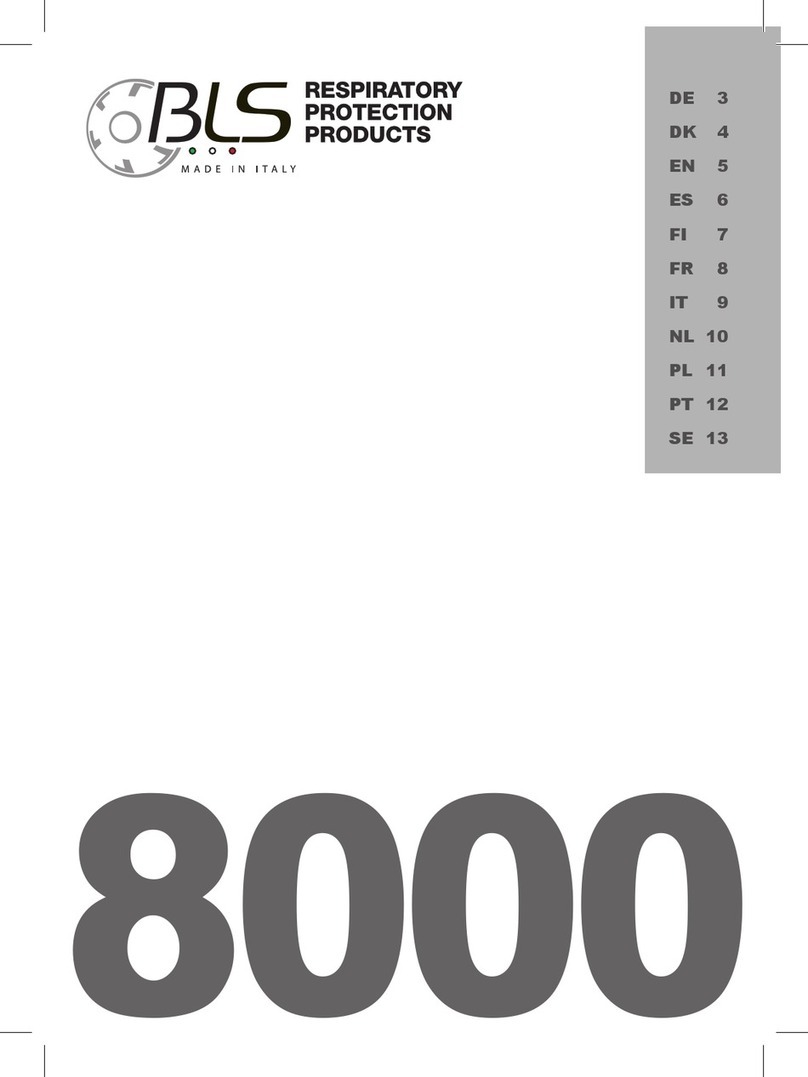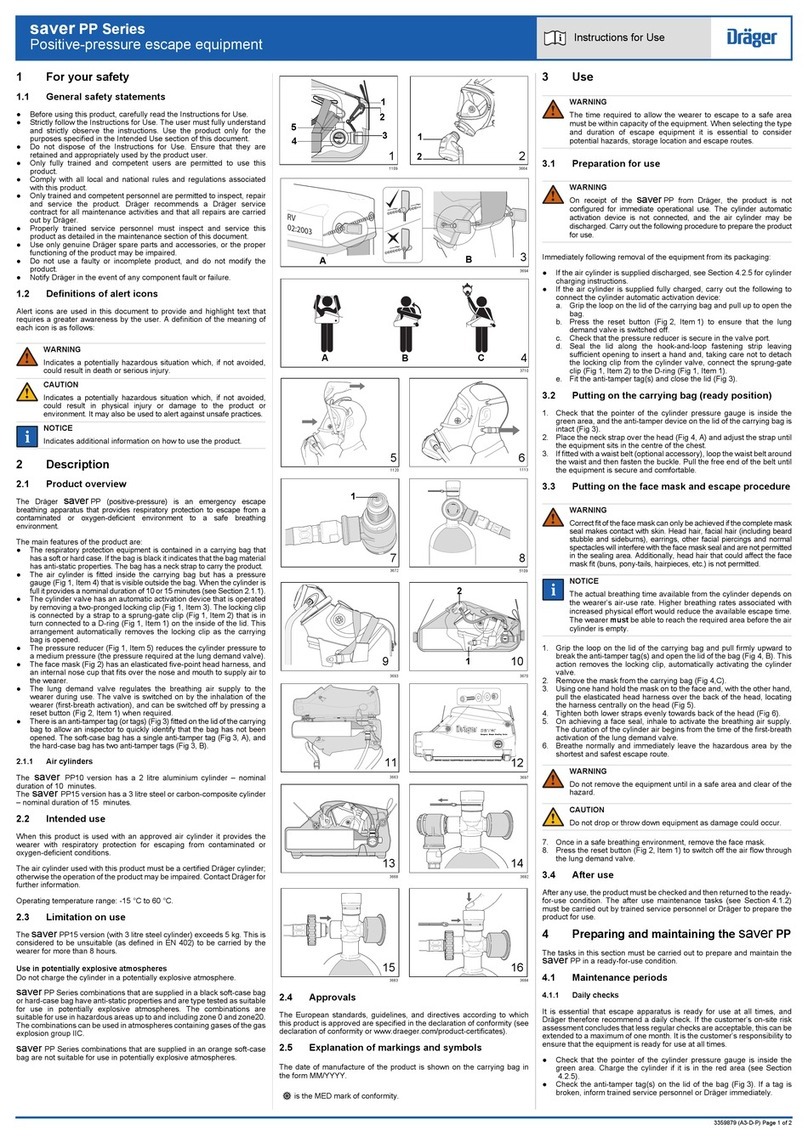
INSTRUCTIONS FOR USE AND CARE
1. An adequate respiratory protection program must
include knowledge of hazards hazard assessment
selection of proper respiratory protective equip-
ment instruction and training in the use of equip-
ment inspection and maintenance of equipment
and medical surveillance.
2. This respirator will perform as designed only if
used and maintained according to the manufactur-
er's instructions. The Program Administrator and
the users must read and understand these instruc-
tions before using or servicing this product.
3. If the respirator does not perform as specified in
this manual it must be taken out of service until it is
checked by properly trained authorized personnel.
4. DO NOT alter modify or substitute any components.
5. Inspect the respirator regularly and maintain it
according to the instructions. Repairs must only be
made by properly trained personnel.
6. This respiratory protective device does not supply
oxygen. Use only in adequately ventilated areas
which conform to the appropriate standard.
7. This respirator must be used in conjunction with the
proper chemical or particulate canister/cartridge(s)
for protection against specific contaminants. If you
cannot determine that the filter canister/cartridge(s)
used with this device is designed for the contami-
nant or if you do not know the identity of the conta-
minant do not use this device.
8. DO NOT use when concentrations of contaminants
are unknown.
9. DO NOT use when appropriate exposure limit (PEL
REL TLV etc.) is not known.
10. Leave the contaminated area immediately if:
a. Breathing becomes difficult
b. Dizziness or other distress occurs
c. You taste or smell the contaminant
d. You experience nose or throat irritation
e. Instructed to do so by responsible individuals
12. Use strictly according to the instructions labels
and limitations pertaining to this device. Follow an
established canister/cartridge(s) change-out
schedule.
13. This respirator may not provide a satisfactory seal
with certain facial characteristics such as beards
or large sideburns that prevents direct contact
between the skin and the sealing surface of the
facepiece. Do not use this facepiece if such condi-
tions exist.
14. DO NOT wear eyeglasses under the facepiece. The
temples or sidebars on eyeglasses will prevent an
air-tight seal. If you must wear glasses install the
spectacle kit.
15. The user must perform a respirator fit test
(Quantitative Test or Qualitative Test) and follow all
warnings and limitations specified.
16. Wear impermeable protective clothing to prevent
exposure to gases and vapors which can poison by
skin absorption.
17. DO NOT use in APR or PAPR mode for urethane
paints or other paints containing diisocyanates
unless an appropriate cartridge change-out sched-
ule is developed. Due to their poor warning proper-
ties over exposure can occur without user aware-
ness and result in severe permanent damage to
the respiratory system. If unable to develop an
appropriate change-out schedule use an air-sup-
plied respirator or SCBA.
Failure to follow all warnings instructions and estab-
lished protective measures can result in serious per-
sonal injury or death.
When using filters in an application that produces
sparks ensure that they are protected by a shield.
Contact with sparks can damage filters and reduce
protection.
FOR CBRN APPLICATION ONLY
• This respirator provides LIMITED protection. It is
NIOSH approved for respiratory protection against
atmospheres containing CBRN (chemical biological
radiological & nuclear) warfare agents; however it
can not protect against all possible warfare agents.
• Some CBRN agents may not present immediate
effects from exposure but can result in delayed
impairment illness or death.
• DO NOT use without a complete understanding of
the instructions and limitations for this respirator
and proper training. Misuse can prevent the respi-
rator from providing the necessary protection.
• CBRN agents may NOT be detectable by smell or
sight. Don respirator before entering an area sus-
pected of containing CBRN agent. Follow proce-
dures established by proper authorities.
• DO NOT use this respirator beyond eight (8) hours
after initial use in an atmosphere containing CBRN
agents or beyond two (2) hours after initial use in
an atmosphere containing CBRN agents in liquid or
mist form; otherwise agent permeation may occur.
• Follow decontamination and disposal procedures
established by appropriate authorities. DO NOT
remove respirator until respirator and clothing are
decontaminated; otherwise exposure to CBRN
agents may result.
• DO NOT replace canister in a contaminated area.
• Be sure to follow applicable decontamination pro-
cedures.
Failure to follow the above in addition to all instruc-
tions and established CBRN agent protective mea-
sures can result in serious personal injury or death.
5TAL 803 (L) Rev. 0 - 10086002


